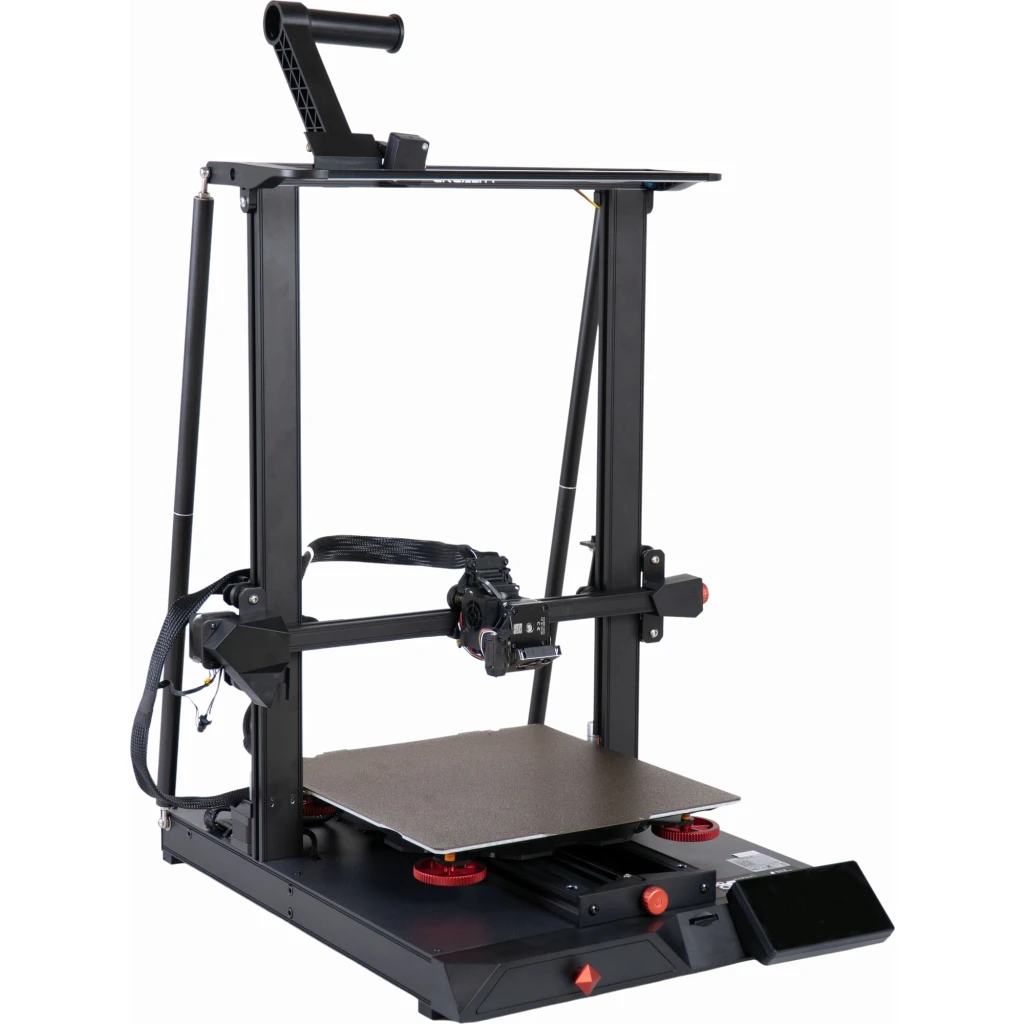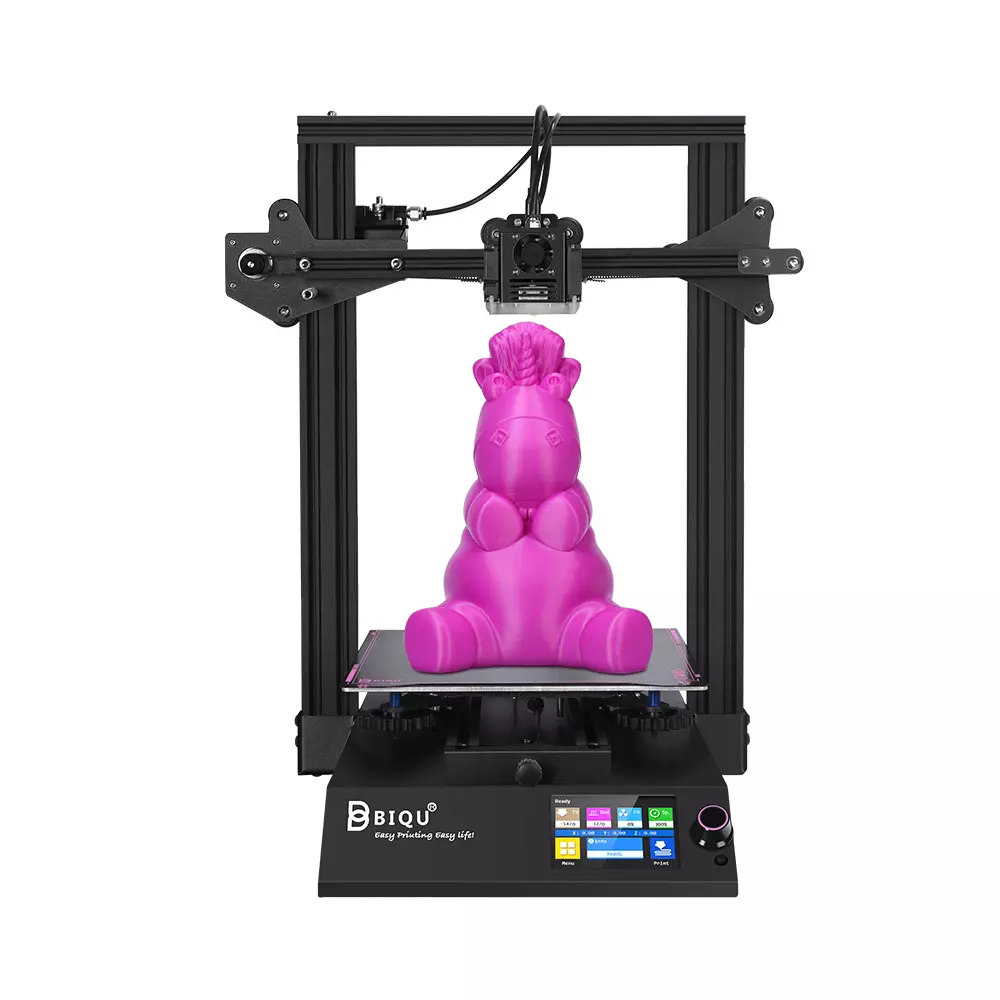Compare CR 10 Smart Pro vs BIQU B1
Comparison between the best 3D printers
Choose the best 3D printer at the best price. The cheapest 3D printers are here.
Buy a 3D printer here with 3D Fila.
 |
 |
|
| Model | CR 10 Smart Pro[BUY CR 10 Smart Pro] |
BIQU B1 |
| Printing Material | Filament | Filament |
| Buy Filament for Creality 3D CR 10 Smart Pro | Buy Filament forBigTreeTech BIQU B1 | |
| Estimated price | $900,00 | $269,00 |
| Manufacturer | Creality 3D | BigTreeTech |
| Release Year | 2020 | 2020 |
| Print Volume [mm] | 300x300x400 | 235x235x270 |
| Printer Size [mm] | 578x522x648 | 412x402x492 |
| Weight [kg] | 13,6 | 8,00 |
| Power Loss Recovery | YES | YES |
| Enclosed printer | NO | NO |
| Bed Leveling | Manual | Manual |
| Filament End Sensor | YES | YES |
| Bed type | Heated | Heated |
| Power supply system | Bowden | Bowden |
| Standard nozzle | 0,4 | 0,4 |
| Maximum Nozzle Temperature [°C] | 300 | 250 |
| Maximum Bed Temperature [°C] | 100 | 100 |
| Maximum printing speed [mm/s] | 50 | 100 |
| Filament holder | YES | YES |
| Camera for supervision | YES | YES |
| Recommended filaments | PLA, PETG, Tritan, Flex, ABS | PLA, TPU, ABS, PETG |
| Recommended slicers | Cura, Simplify, Slic3r, IdeaMaker | Cura, Simplify, Slic3r |
| Maximum Resolution [mm] | 0,1 | 0,1 |
| Processor | 32 Bits BTT SKR V 1.4 | |
| Display | Display touchscreen 4,3'' | Touchscreen TFT 3,5'' |
| Power Supply | 110/220V / 350W | 24V / 360W |
| Connectivity | SD / USB / Wi-Fi / Ethernet | SD / USB |
| Operating systems | Windows, Mac, Linux | Windows, Mac, Linux |
| Date of registration in the system | 2022-11-04 | 2021-04-14 |
| Release date | 2020 | 2020 |
| Extra features | Creality's CR-10 Smart Pro printer offers a large 300x300x400mm build volume, Sprite Pro direct extruder for multiple materials, CR Touch auto-leveling, PEI magnetic bed, 4.3" touchscreen, LED lighting, and Creality Cloud connectivity. Some areas of improvement include the use of brass spindle nuts and tinned wires. | The BIQU B1 is an advanced 3D printer with a silent 32-bit BTT SKR V1.4 motherboard and ARM Cortex-M3 CPU, offering DIY interfaces (I2C, SPI, WiFi) and dual Z-axis. Its dual BTT B1 TFT35 V3.0 operating system allows real-time monitoring and multiple printing modes, including G-code visualization effects. It stands out for its BIQU SSS (Super Spring Steel), ensuring easy model adhesion and simplified removal, with the possibility of using it on both sides. It includes a filament sensor, automatically pausing printing in case of filament breakage. The multicolored RGB lights integrated into the hotend allow you to view the printing status even at night. Additional notes include the need for a BIQU-specific Type-C cable and extra interfaces for smart filament sensor and BL Touch. |
| Support for multiple colors and materials (AMS and CFS) | NO | NO |
Notes * |
||
| Cost-benefit | 6 / 10 | 7 / 10 |
| Hardware | 2.5 / 10 | 2 / 10 |
| Tela | . | . |
| Print volume | 4 / 10 | 3 / 10 |
| Performance | 1 / 10 | 1 / 10 |
| [BUY CR 10 Smart Pro] |
Conclusion |
| In conclusion, when comparing the CR 10 Smart Pro and the BIQU B1, it's evident that both printers cater to different needs and priorities in the 3D printing market. The CR 10 Smart Pro, while significantly more expensive, offers a larger print volume, advanced features like automatic bed leveling, and superior material compatibility, making it an appealing choice for users who prioritize performance and versatility in their 3D printing tasks. Its additional functionalities, like Creality Cloud connectivity and enhanced monitoring capabilities, further solidify its position as a premium option for serious enthusiasts. On the other hand, the BIQU B1 presents an excellent value for those who are budget-conscious yet still desire a reliable and feature-rich 3D printer. With a respectable print volume and multiple advanced features such as a silent motherboard and dual Z-axis, it represents a strong cost-effective choice for both beginners and intermediates. Its effective design and ease of use, combined with its lower price point, make it a compelling option for those looking to enter the world of 3D printing without a significant financial commitment. Ultimately, the decision between the two will depend on the user's specific needs—whether they prioritize expansive capabilities and higher-end features or seek out a more budget-friendly, yet capable, alternative. |

